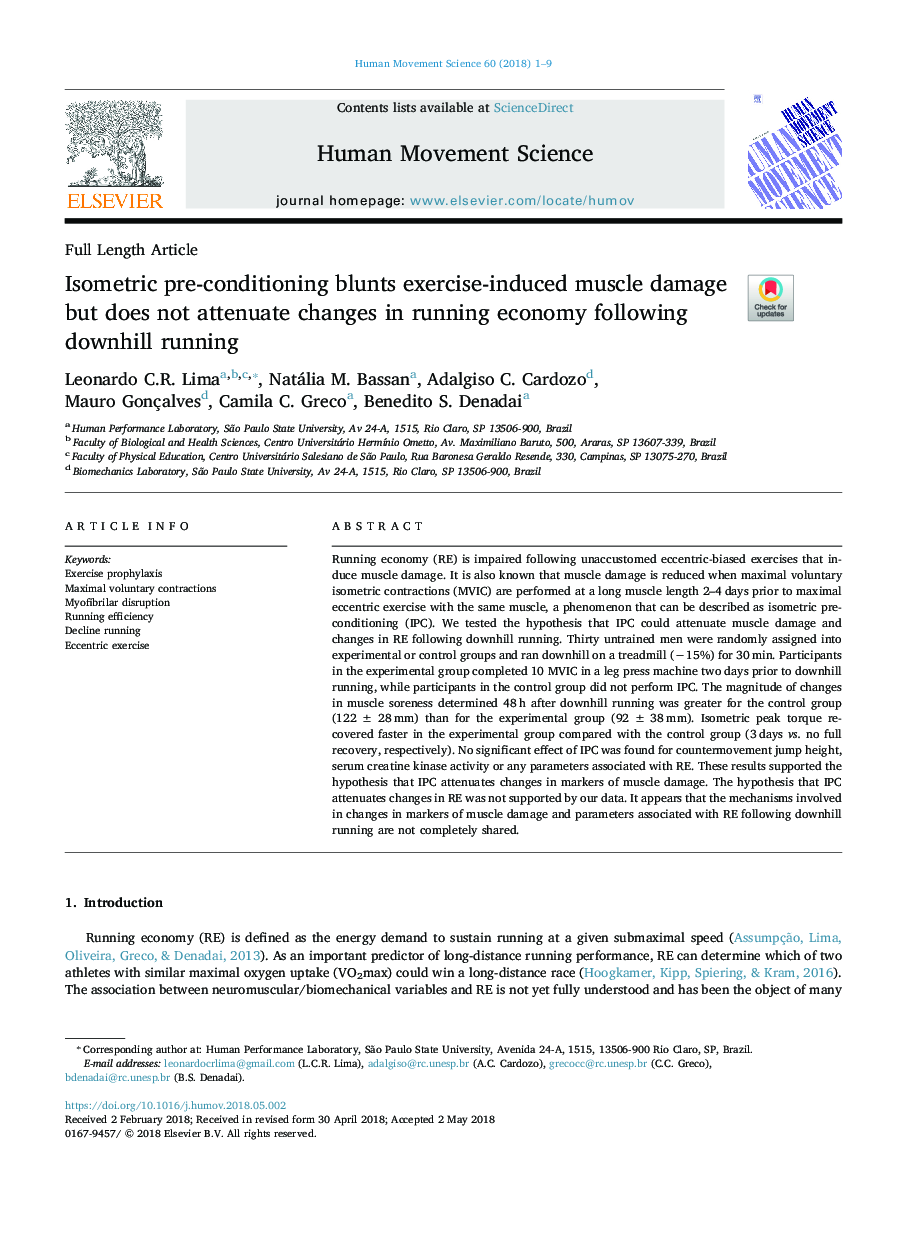| Article ID | Journal | Published Year | Pages | File Type |
|---|---|---|---|---|
| 7290753 | Human Movement Science | 2018 | 9 Pages |
Abstract
Running economy (RE) is impaired following unaccustomed eccentric-biased exercises that induce muscle damage. It is also known that muscle damage is reduced when maximal voluntary isometric contractions (MVIC) are performed at a long muscle length 2-4â¯days prior to maximal eccentric exercise with the same muscle, a phenomenon that can be described as isometric pre-conditioning (IPC). We tested the hypothesis that IPC could attenuate muscle damage and changes in RE following downhill running. Thirty untrained men were randomly assigned into experimental or control groups and ran downhill on a treadmill (â15%) for 30â¯min. Participants in the experimental group completed 10 MVIC in a leg press machine two days prior to downhill running, while participants in the control group did not perform IPC. The magnitude of changes in muscle soreness determined 48â¯h after downhill running was greater for the control group (122â¯Â±â¯28â¯mm) than for the experimental group (92â¯Â±â¯38â¯mm). Isometric peak torque recovered faster in the experimental group compared with the control group (3â¯days vs. no full recovery, respectively). No significant effect of IPC was found for countermovement jump height, serum creatine kinase activity or any parameters associated with RE. These results supported the hypothesis that IPC attenuates changes in markers of muscle damage. The hypothesis that IPC attenuates changes in RE was not supported by our data. It appears that the mechanisms involved in changes in markers of muscle damage and parameters associated with RE following downhill running are not completely shared.
Related Topics
Life Sciences
Neuroscience
Cognitive Neuroscience
Authors
Leonardo C.R. Lima, Natália M. Bassan, Adalgiso C. Cardozo, Mauro Gonçalves, Camila C. Greco, Benedito S. Denadai,
